- Qualcomm Launches Snapdragon 4 Gen 2 Mobile Platform
- AMD Launches Ryzen PRO 7000 Series Mobile & Desktop Platform
- Intel Launches Sleek Single-Slot Arc Pro A60 Workstation Graphics Card
- NVIDIA Announces Latest Ada Lovelace Additions: GeForce RTX 4060 Ti & RTX 4060
- Maxon Redshift With AMD Radeon GPU Rendering Support Now Available
Tech News
Hasselblad’s Kodak CCD-equipped H3DII-50 Offers 50 Megapixels
No matter the technology, people enjoy seeing higher numbers. Faster processors, more memory, more horsepower and of course, more megapixels. The company to reign supreme in that arena for a while has been Hasselblad, who are now offering the H3DII-50, a 50 megapixel monster, utilizing Kodak’s latest highest-end 36.8×49.1mm sensor.
The camera’s price is not yet known, but considering the ‘smaller’ H3DII-39 retails for just under $34,000, then you could expect the latest iteration to score upwards of $40,000. But what kind of resolution avails you with a 50 megapixel CCD? How does 6132×8176 sound? As incredible as that may appear, it sure doesn’t seem that much more impressive over the 39 megapixels 5412×7212. But as simple math will prove, the higher we go in megapixels, the slower the overall resolution will increase to our eye.
But still, 50,000,000 pixels from a single image is simply incredible. To put it into perspective, a 1680×1050 monitor comes close to 1.8 million pixels, while the current monster, 2560×1600, sits at a comfortable 4.2 million pixels. That’s not the most impressive part, though. Each image taken with the H3DII-50 will weigh in at around 70MB a piece. Not only is the camera itself expensive, but the computer you’d need to handle the images would also have to be.
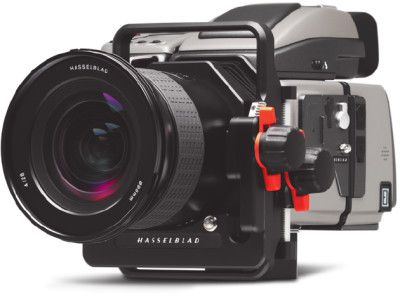
To fit more pixels on the same chip, Kodak had to perform some voodoo shrinkage on them; they’re 6 microns, compared with 6.8 for the KAF-39000. Kodak claims that the chip has increased data throughput, which seems odd since the specs (which are admittedly stamped “preliminary”) indicate a maximum throughput of 18MHz vs. 24MHz for the 39-megapixel CCD.
Source: C|Net Crave
Hans Reiser Leads Authorities to Wifes Body
We haven’t covered the Hans Reiser trial to any great degree, due to it not being something of particular interest to most of our readers, but it’s a twisted tail regarding what used to be a very popular software developer. Hans was first accused of murdering his wife in late 2006, and since then the entire legal process and trial has taken well over a year and a half to conclude. When it did, he was found guilty, though no body was ever recovered.
That led many to believe that Hans could have still been innocent, but his sketchy demeanor worked to hurt more than help him. News is out today, however, that he led authorities straight to Nina’s body, proving that he was indeed the creep behind this horrible crime. His cooperation means he will be eligible for parole after 15 years, rather than the original 25.
What this means for ReiserFS is probably certain doom. Many of the largest Linux distributions gave up on the file system long ago, including SUSE, and it even seems to be getting weened out of the Linux kernel itself. We’ll have to wait and see, I guess. I do recommend reading the Ars Technica quickie article on this, though, if you happen to love play on words, like the one in the quote below.

Our postmortem analysis of the ReiserFS mailing list, however, seems to indicate that the project is already beginning to fall apart. Ongoing development has been relocated to kernel.org, but the effort could be doomed to bitrot because developers don’t seem particularly interested in taking a stab at maintaining the code.
Source: Ars Technica
Outside the US, iPhone Plan Prices are Asinine
With the iPhone 3G right around the corner, are you getting ready to make the 11th a fun-filled day? Many aren’t, and unless you have been living under a BlackBerry, you’d know that most people outside of the US are getting the roughest end of the deal.
The Canadian side of things has appeared on sites all over North America, but in actuality, Canucks aren’t seeing prices that come even close to other parts of the world. Don’t get me wrong, Rogers is using their monopoly to the fullest degree, but picture the poor folk in New Zealand, who have a 1GB / 600m plan that will run them $250 per month! The smallest plan, at $80, offers 250MB / 120m.
It’s also been found out that even though the AT&T plan pricing is relatively sane, the rock-bottom $199 price for the 3G will apply to new customers only. So if you are already in a plan with the previous iPhone, you can expect to pay around the same as you did for the first iPhone. Who knew when the iPhone first came out how much of a money-sucker it would be, and not even by Apple!

Another interesting point: all of us expecting to waltz into AT&T stores and pick up an iPhone for $199 will be sadly surprised. The $199 price is for new contract-holders only. If you’re an AT&T subscriber you’ll be paying $399 and $499 for your iPhone – about $100 less than the non-contract price.
Source: TechCrunch
Pioneer Develops 400GB Blu-Ray Disc
It’s been a long road for Blu-Ray. But now that the format war and the need for a completive edge is long over, one might have guessed the members of the Blu-ray Disc Association would have given up on creating a means for higher capacity discs. It looks like we were wrong.
Today, Pioneer put out a press release touting their newest and greatest achievement in optical media yet. Their “wide-range spherical aberration compensator and light-receiving element” enabled them to produce a 16-layer read-only Blu-Ray disc, complete with the standard 25GB capacity per layer. Naturally, while this technology is only available for testing purposes for the time being, we will undoubtedly see a similar solution headed for retail when the technology is more mature.
Pioneer plans to release more details at the International Symposium on Optical Memory and Optical Data Storage on July 13.
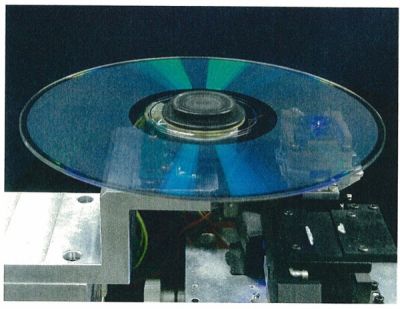
July 7, 2008, Tokyo, Japan – Pioneer Corporation has succeeded in developing a 16-layer read-only optical disc with a capacity of 400 gigabytes for the first time in the world*1. Its per-layer capacity is 25 gigabytes, which is the same as that of a Blu-ray Disc (BD). This multilayer technology will also be applicable to multilayer recordable discs. This development has bolstered Pioneer’s confidence in the feasibility of a large-capacity optical disc, which is expected to become necessary in the near future.
PC Gaming Isn’t Dying, EA’s Games Just Suck
Way back in April, EA Sports President Peter Moore opened the “PC is dying” floodgates by announcing that Madden 09 would not have a computer-counterpart. The reasoning was that the games are selling less and less, and less, with each year that passes. Fair enough, and understandable.
But, Mr. Moore has again gone ahead and re-opened the gates for more debate, but this time has omitted important facts that anyone who’s ever played an EA sports title on the PC is fully aware of. Moore on his blog states that piracy is a massive reason EA is choosing to step away from the PC, and sales go down each year. Again, fair.
But as Rock, Paper, Shotgun investigates, one of the potential reasons for decline might very-well be the fact that their sports titles on the PC get worse with age. While FIFA 06 received an 83% score from PC Gamer UK, FIFA 07 received a 71% and 08 received a 66%. Seems like a lot more than piracy is to blame.
I can agree that their PC games are lackluster, over the console counterparts. Not ever have I bought an EA-developed PC game and been floored. The graphics on the PC should be better, but they aren’t. Heck, NFS: Pro Street on the PC doesn’t even offer a 2560×1600 resolution, when every other current game does. Of course that’s a very limited issue with gamers, but it goes far beyond that. They half-ass their PC games, and that’s why they’re on a downhill slope.
But regardless of whether EA will admit it or not, that’s what they want. With the PC as a low priority, they can push more efforts towards the consoles, where all their money seems to be.

Also, conflating employee pay with return on investment is extremely disingenuous. Of course your employees deserve to be paid. However, if they produce substandard work not of a quality to see good sales, I’d suggest they should no longer be your employees. If employees are paid based on the sales of the product, rather than for their time creating them, then the products need to be really good.
Source: Rock, Paper, Shotgun
Keeping PC’s Cool During Summer Months
Ahh, summer. The time for beaches, brews and babes. It’s also the time of year when computers are your worst enemy. As if the heat from the sun isn’t bad enough, we have CPUs reaching in excess of 50°C, resulting in a consistently warm room. It’s a disaster if you happen to be in an overly small room.
Well, Ars Technica might come to the rescue for you, with some tips on how to keep your computer, and in turn, yourself cool during this warm season. Their tips include underclocking and lowering voltages, and also to stay away from CRTs. That seems like a harsh choice, when strapping a house fan to one would be a far less expensive option.
Personally, I recommend simply making sure the computer is clean inside and out and has a superb airflow scheme. The better the airflow, the lower the temps. Past that, another good solution would be getting an air conditioner. Or, turning the PC off when it’s not being used. That might be the easiest solution of all…

If you happen to be using an older, workstation-class system, don’t underestimate its power consumption. I finally got around to slapping my Kill-A-Watt meter on my own rig, and was astounded to see that my system was drawing 300W of power at idle. Firing up Folding@Home + Unreal Tournament 3 pushed power consumption up to 420W—the most I’ve ever seen from any rig, including the ones I benchmark.
Source: Ars Technica
Gentoo 2008.0 Released, Offers Revamped Installer
It may have taken a while to get here, but the latest version of Gentoo, 2008.0, is now out and ready for your CD burners. The road to 2008.0 wasn’t easy. We originally saw a skipped 2007.1 release, followed by a very-delayed current release, but hopefully things will be smoother from here on out. One of the reasons for the delay are staffing issues, so if you have ever wanted to join a distro team and happen to like Gentoo, then the opportunity is there.
The latest release includes an updated installer, one that’s equipped with more drivers for better hardware support (I’ve yet to test X48/P45 support) and also a fresh coat of paint, using Xfce as the backdrop. In addition, packages have been upgraded to their latest stable versions, including the Linux kernel (2.6.24), gcc (4.1.2), glibc (2.6.1) and Portage.
Profiles have also been completely reworked, so for the best optimization, you can emerge –sync and then select a new profile using eselect profile list and eselect profile set after choosing the appropriate one for your machine. Performing an emerge -avuD world will enter you into 2008.0-land.
If you are interested in testing out the latest version, there are numerous versions available on the downloads page. If you are unsure of what Gentoo is or why I use it as my full-time OS, you can check out previous reviews and other Linux-related content right here.

Code-named “It’s got what plants crave,” this release contains numerous new features including an updated installer, improved hardware support, a complete rework of profiles, and a move to Xfce instead of GNOME on the LiveCD. LiveDVDs are not available for x86 or amd64, although they may become available in the future. The 2008.0 release also includes updated versions of many packages already available in your ebuild tree.
Source: Gentoo Linux 2008.0 Forum Thread
Bah, Uptime is Overrated!
We offer our sincere apologies to all who attempted to access the web site this weekend, as it was down from late Friday evening to supper time on Sunday. The stem of the issue goes beyond simple coding issues, but rather server and software configurations.
To make a long story short, we have now recovered, we are now better people and we now have wider waists thanks to the amount of beer required to get through the ordeal. The result is a far better running web site, and the intent to never let such an issue creep up again.

Along with the website being back online, we’ve imported some fresh code also, which doesn’t affect anything noticeable. But, that doesn’t mean bugs couldn’t have creeped in. If you happen to notice anything out of the ordinary, please don’t hesitate to let us know, and we’ll fix it immediately.
That all aside, we have some big plans for the site throughout the summer, so stay tuned as we work towards making the site much more feature-rich, more enjoyable to use and easier to look at. Thanks guys!
Customers Line Up for 3G iPhone A Week Early
A group of pretentious customers have lined up a week early and the flagship 5th Avenue Apple store to ensure they get their hands on Apple’s newest product. It’s not clear whether or not this is just a grab for attention or media stunt, but the camping chairs, blankets and food are all laid out. These people are definitely in it until the end.
Apple’s 3G iPhone will be released July 11, and feature an in-store activation process that will surely slow things down for would-be customers standing in long lines. One thing’s for sure: If I decide to get one, I’m sure as heck not standing in line.

So we heard some really over-eager folks have decided to get a jump on the iPhone 3G line — a really, really big jump. Obviously, we had to head down and see if it was true… and it is. Right now, about ten people have started a line outside of Apple’s flagship store on 5th Avenue in New York.
Writers and Reviewers: Techgage Wants You!
It’s that time again. We’re seeking to add several new authors to our staff, to ensure that we can continue to provide the best in cutting-edge PC hardware and software news, reviews, and industry analysis. You think you can do what we do? Here’s your invitation! We’re planning some serious growth in the near future, but we need people that can help make it happen.
All positions for Techgage are voluntary, but can be rewarding. In addition to being a great way to get your fix of the ‘shiny-shiny’, you get to build your reputation as a knowledgeable authority in the world of PC technology, and you get a cool Techgage.com email address. You’ll also join a spirited team of dynamic individuals who care deeply about providing our visitors with the best experience possible.

To be the best candidate for a position at Techgage, we suggest that you:
- Are passionate about PC technology (being opinionated is a plus!)
- Are a "self-starter" who is willing to work independently on projects
- Be able to write with proper grammar, spelling, and punctuation
- Are generally knowledgeable in most areas of PC hardware (CPUs, motherboards, graphics, storage, peripherals, accessories), software (gaming, productivity, operating systems), or consumer electronics (home theater, audio, video, ‘connected home’ products)
- Have an entertaining writing style
Applicants must submit a writing sample of no less than 1200 words (we can help with this if necessary), or an example of previous work. We’d also like to know what area of PC technology you’re most interested in. To apply, send an email to Rob.Williams [at] Techgage [dot] com for consideration.
Writers and Reviewers: Techgage Wants You!
You think you can do what we do? Here’s your invitation! We’re planning some serious growth in the near future, but we need people that can help make it happen.
All positions for Techgage are voluntary, but can be rewarding. In addition to being a great way to get your fix of the ‘shiny-shiny’, you get to build your reputation as a knowledgeable authority in the world of PC technology, and you get a cool Techgage.com email address. You’ll also join a spirited team of dynamic individuals who care deeply about providing our visitors with the best experience possible.
- Are passionate about PC technology (being opinionated is a plus!)
- Are a "self-starter" who is willing to work independently on projects
- Be able to write with proper grammar, spelling, and punctuation
- Are generally knowledgable in most areas of PC hardware (CPUs, motherboards, graphics, storage, peripherals, accessories), software (gaming, productivity, operating systems), or consumer electronics (home theater, audio, video, ‘connected home’ products)
- Have an entertaining writing style
Applicants must submit a writing sample of no less than 1200 words (we can help with this if necessary), or an example of previous work at a similar site. We’d also like to know what area of PC technology you’re most interested in. To apply, send an email to Rob (rob.williams@) or Rory (rory.buszka@) for consideration.
Writers and Reviewers: Techgage Wants You!
You think you can do what we do? Here’s your invitation! We’re planning some serious growth in the near future, but we need people that can help make it happen.
All positions for Techgage are voluntary, but can be rewarding. In addition to being a great way to get your fix of the ‘shiny-shiny’, you get to build your reputation as a knowledgeable authority in the world of PC technology, and you get a cool Techgage.com email address. You’ll also join a spirited team of dynamic individuals who care deeply about providing our visitors with the best experience possible.
To be the best candidate for a position at Techgage, we suggest that you:
- Are passionate about PC technology (being opinionated is a plus!)
- Are a "self-starter" who is willing to work independently on projects
- Be able to write with proper grammar, spelling, and punctuation
- Are generally knowledgable in most areas of PC hardware (CPUs, motherboards, graphics, storage, peripherals, accessories), software (gaming, productivity, operating systems), or consumer electronics (home theater, audio, video, ‘connected home’ products)
- Have an entertaining writing style
Applicants must submit a writing sample of no less than 1200 words (we can help with this if necessary), or an example of previous work at a similar site. We’d also like to know what area of PC technology you’re most interested in. To apply, send an email to Rob (rob.williams@) or Rory (rory.buszka@) for consideration.
Hitachi Has Plans for 5TB HDD by 2010
The Japanese company announced plans to have a 5TB hard drive by 2010. The technology used, which they call "current perpendicular-to-the-plane giant magnetoresistance" will allow 3.5" drives to push their data density over 1TB per square inch.
It’s not clear whether or not these drives will be a simple proof of concept, or be available to consumers for purchase, but we’ll no doubt be able to purchase a similar capacity drive sometime in the future. Even if a technology like SSD may be the future, NAND chips will have a hard time catching up.

Solid-state disks may be eating into the territory of traditional hard drives, particularly in laptops, but that doesn’t mean spinning platters are on their last legs – particularly not at Hitachi.
The Japan-based company has stated that it plans to have a commercial 3.5-inch hard drive on the market that can hold 5TB by 2010. It aims to achieve this with write heads that use something called current perpendicular-to-the-plane giant magnetoresistance (CPP-GMR).
YouTube Forced to Hand Over User History to Viacom
A New York judge on Wednesday supported Viacom’s request for Google to hand over data on their users, including their names and their viewing history on YouTube. Initially, their request demanded Google give up the source code for the popular video sharing site, but that particular clause was denied.
The information will be used as evidence against Google to prove that copyrighted content on the web is more popular than original material, which would lead to Viacom to ask for a settlement fee. Google’s argued against the ruling, saying that revealing the data would "invade its users’ privacy," but the judge responded by saying any concerns were purely "speculative."
As one might expect, the judge’s decision has been taken under fire by the Internet community on the whole, who have no say whether or not their data can be used by a third party. The Electronic Frontier Foundation has already taken a stance to support Google and fight the stance because it violates the Video Privacy Protection Act, and word has recently come out that the personal data will not be viewable by Viacom, but by "outside ad visors."
My major problem with Viacom’s request is the fact that the very data they’re searching for, anonymous video views, are already available on YouTube’s own site. It’s really a painful process to determine what the most popular videos on the site are, so forcing Google to give away users’ names and IP addresses is a blatant attempt to garner evidence to attack their users.
It’s hard to disagree that the judge’s comment about privacy concerns being "speculative," and not tangible, can only serve to highlight his incompetence. Clearly, if anyone in the equation had any regard for privacy, the whole deal would have been swiftly rejected.

Google will have to turn over every record of every video watched by YouTube users, including users’ names and IP addresses, to Viacom, which is suing Google for allowing clips of its copyright videos to appear on YouTube, a judge ruled Wednesday.
Apple Cuts Price of SSD MacBook Air
As SSD prices continue to fall, we start seeing the drop in price from more and more OEMs. Apple’s long been notorious for keeping their price points on their Mac line until a product refresh, but competition no doubt forced their hand.
The top of the line MacBook Air dropped in price from $3,098.00 to $2598.00, a $500 discount. As our source points out, an Air with an SSD drive can be configured for as little as $2,398.00 without any external (refurbished or educational) discount. With OZC’s introduction of their more affordable solid-state drives, hopefully we’ll see prices drop even further for other products as well.

With the price of NAND flash memory continuing its steady sequential decline, Apple Inc. this month cut the price of its Solid State Drive (SSD)-equipped MacBook Air by half a grand, AppleInsider has discovered.
Microsoft Offers OneCare & Office Via Subscription Model
Microsoft will finally offer their Equipt service this month, a $70 yearly fee that provides Windows Live OneCare and online tools as well as Office Home and Student 2007. The idea is having a bundle where all applications are kept up to date in an affordable package. In this case, if the costs were taken for a year, the bundle is still cheaper than buying a boxed copy of office, with the benefit of antivirus protection built in (for reference, Office costs $150, and OneCare costs $50).
The service will be sold at Circuit City stores nationwide. As Ars points out, the company stresses that they will not be making a complete transition to subscription-based models.
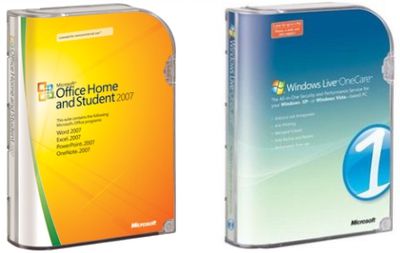
Microsoft has released more details about its new software subscription bundle that went into testing in mid-April. The bundle has been officially dubbed Microsoft Equipt and will be made available in mid-July 2008 at nearly 700 Circuit City stores in the US. Equipt licenses will cost $70 per year and will include Windows Live OneCare, Microsoft Office Home and Student 2007, Microsoft Office Live Workspace, and Windows Live tools.
Game Consoles Offer Sexual Predators ‘Foot In The Door’
As more and more game consoles offer network connectivity and online play, potential downsides to this bevy of networkability have begun to crop up. More recently, ‘net-connected consoles are being treated as a new battleground in the sexual predation of children.Sexual predators are turning to online games that offer in-game test messaging and voice chat to lure new victims.
But as the predators move to new types of media to court their prey, police and federal enforcement agents are hot on their heels, moving to Xbox Live and PlayStation Network. Now, if there’s a cool law enforcement job to have, it would have to be spending your days playing online games in order to catch sexual predators. You’d be able to get your game on, and do good for society at the same time. Heck, I’d sign up for that.
In Utah, a man was charged this year with sexual exploitation of a minor for enticing a 12-year-old boy he met through an online game into having sex, says Lt. Jessica Farnsworth, field commander of the Utah Internet Crimes Against Children Task Force. She says predators meet kids on a game, "groom them and then try to move off the game."
PS3 2.40 Firmware with In-Game XMB and Trophies Now Available
It’s been a long wait for PS3 fans who have ached for in-game access to the xross media bar and a comparable achievement system to Xbox Live. Be sure to check out Sony’s FAQ and our earlier post explaining the PS3’s trophies system if you have any questions.
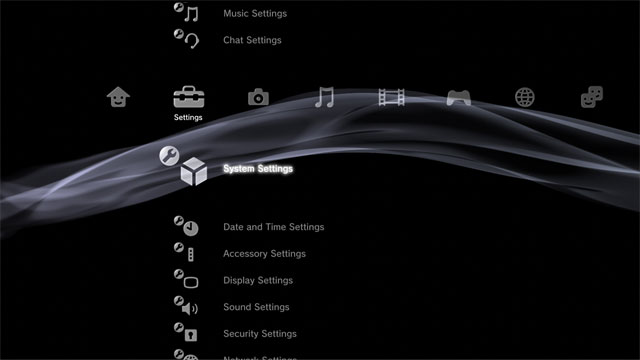
The Tale of the Dying Distributions
There’s no doubt that the popularity of Ubuntu has been nothing short of overwhelming with Linux geeks and newbies alike. It’s constantly on the number one spot on DistroWatch.com, and new releases are treated like the second coming for many eager Ubuntu fans. But some shocking news accompanies its success.
Though their means of deduction are far from scientific (unless you consider Google Trends terribly reliable), CodingExperiments took a look at the rising and declining search trends for the major distributions. In short, Debian, RedHat and Slackware seem to be declining dramatically, while openSUSE and Fedora seem to either have spikes during releases, or are showing some growth.
It gets interesting when we come to Ubuntu’s history. You might have guessed that it has been growing more than any aforementioned distro, but its trends also show that it will overtake Linux as a search term. In time, this could mean a few interesting changes in the methodology and relevance of separate distributions in the Linux community, but it’s too early to make any drastic predictions.
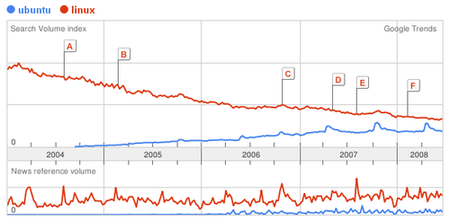
So, what does this tell us? First of all, Ubuntu is pretty close to being considered the face of Linux. Second, it’s the newer distributions like Ubuntu, OpenSUSE, and Fedora that new Linux users are going for. Of course, it’s mainly Ubuntu, but I believe that there could be plenty of new users arrinving at the Fedora and OpenSUSE communities if both distributions work hard to become more user friendly.
OCZ Announces New, More Affordable SSDs
Today, OCZ released their plans to push out their new Core Series SSD lineup. The new disks, available in 32GB, 64GB and 128GB capacities, will sell for $169, $259 and $479 respectively, the cheapest we’ve seen so far. All of the drives will also have a two-year warranty.
The nice thing about these drives is their uncompromising speed. Read speeds are rated at 120 to 143MB/s, with write speeds at 80 to 93 MB/s. Though the technology is still fairly new, the SSDs are estimated to last for about 1.5 billion hours, rectifying the major complaint with the technology.
As SSDs continue to drop in price, we’ll slowly but surely see more products begin to adopt them. Given the alloted time frame thus far, it’s only a matter of time until we’ll see these products phase out traditional hard drives.

OCZ is looking to trump Super Talent push down-market with faster SSDs at even lower price points. The company today announced its new Core Series 2.5" SSDs which are the most affordable, large-capacity SSDs that we’ve seen to date. The 32GB, 64GB, and 128GB models are priced at $169, $259, and $479 respectively — the drives also feature a two-year warranty.
NVIDIA’s PhysX Looks to Have Bright Future
For those of you who don’t often look at the top of the page, you are missing out on some cool content. One of the most notable would be our in-depth look at NVIDIA’s PhysX technology, which is now supported right off of NVIDIA top-end GPUs, with more to be supported next month. Is it worth getting excited over? If developers begin to pick up on the technology, then yes, definitely.
The problem when AGEIA owned the rights to the technology was that they were selling the technology to be tied to an add-in card, which no one wanted to buy. With support built for a GPU, it blows the doors open for support, since everyone has one. Of course, the bigger the card, the better the capabilities, but at least the option will be there. We’ll be learning a lot more about this throughout the summer, so stay tuned as we’ll keep you up to date.
For those looking for a new tuner, you might be interested in our look at AMD’s brand-new All-In-Wonder HD card, which should be available in the weeks to come. It packs in HD 3650 performance and TV tuner functionality into the same card. Sounds great, but the proof of its value will be seen once we get one into our labs.
Lastly, you cannot miss Bill’s exhaustive look at 22 different CPU coolers, which he pit against the ultra-hot QX6850 Quad-Core processor. You might be surprised which coolers come out on top, and which fail miserably. It’s just too bad that we awarded an Editor’s Choice award to a cooler that, as it turns out, has been discontinued even before it could launch. Crazy!

PhysX is getting a lot of attention right now, but the reasons vary wildly. Since we haven’t taken a look at the technology in a while, this article’s goal is to see where things stand. We’ll also be taking an in-depth look at GPU PhysX performance, using both 3DMark Vantage and UT III.
PS3’s Trophies System Explained
Playstation 3 gamers have been waiting a while for trophy functionality, like Xbox Live’s accomplishments system, but the wait is finally almost over. On the official blog, they’ve just posted a video explaining everything you need to know about the new system, top to bottom.
Essentially, it’s not far different from the Xbox Live accomplishments, but it seems more intuitive (and not so slow to navigate). You can accrue different trophies in supported games, and they will automatically be added to your profile. As you earn more, they will combine with your overall trophies: bronze, silver, gold and platinum. The more you have, well, the better the person you are, of course!
In all seriousness, it looks like a great system, one that’s a bit better designed than the accomplishments on Xbox Live, but the biggest downfall is the fact that it’s only for certain games going forward, and it appears very few previously-launched games will add the functionality in. It would be possible with the help of a patch, but whether or not developers will care enough to release such a thing is yet to be seen.
No launch date announced for the new firmware that adds this functionality, but it should be very, very soon.

Super Stardust HD, a PLAYSTATION Network-exclusive released in June 2007, will be the first game to leverage Trophies and will offer a variety of trophies. Trophy support in Super Stardust HD will be available for first-time users who purchase the game soon after firmware v2.40 is released, while those who previously purchased and downloaded the title will be prompted to install a free patch.
Source: Playstation Blog
OCZ’s Neural Impulse Actuator On Sale
In my travels around the web, I continually see people inquiring about OCZ’s Neural Impulse Actuator and when it will be available. Well silly rabbit, it’s been available for a while now. It’s just that it’s not available on many of the websites you regularly shop at.
Currently, the best place to purchase it is Buy.com, which is somewhat unfortunate as they don’t have the cleanest track record when it comes to making customers happy. Amazon.com is also said to have been stocking it, but I couldn’t find anything on their site.
Canadian e-tailer NCIX.com also sells it, but they are currently out of stock and are taking special orders. So while the NIA is a little difficult to acquire, it’s not impossible. Hopefully the likes of NewEgg will take stock soon.
As a side note, Buy.com also stocks their barebone gaming notebook, for what seems like a great deal at $656. Bear in mind that you will need to purchase the CPU, hard drive and RAM on the side, but they are readily available on popular e-tailers. Finally, a gamers DIY done (seemingly) right! For my brief thoughts on both the notebook and NIA, please check out our Computex coverage.

It works by reading the pressure from your face/head and interpreting the signals to commands that a computer game can understand. Each time you play, you will need to run the calibrator for the most accurate control, and when done, you’ll be able to configure certain aspects to your liking.
Source: Computex ’08 Roundup
Diablo III Confirmed by Blizzard
Today, Blizzard confirmed the inevitable. At the company’s World Wide Invitational, they broke the news that Diablo 3 was in development, and have since provided tons of promotional material on their website. Fortunately for most fans, they plan on keeping true to the original hack-and-slash Diablo formula, while updating the graphics and a few key gameplay elements.
Shacknews runs down the new feature set:
- Explore a fully-realized Sanctuary–the living, breathing gothic fantasy world of Diablo III rendered in gorgeous 3D.
- Battle the unholy forces of the Burning Hells with all-new character classes like the otherworldly Witch Doctor, or with re-imagined warriors from Diablo’s past: such as the fierce Barbarian.
- Rain Hell on your enemies wielding the interactive environment as a weapon: lay cunning traps, turn destructible objects against your foes, and use environmental obstacles to your advantage–all powered by the Havoc physics system.
- Experience the intensity of multiplayer Diablo III over an all-new, wickedly-enhanced Battle.net platform with numerous enhancements to make connecting with your friends easier–and cooperative gameplay more fun.
Among these features, expect to see new classes, environmental destruction, larger enemies and a new health mechanism that doesn’t require drinking potions.
If you need to gauge my excitement for the game (especially after seeing the trailers), just know that my mouse is going to hate me.

It’s Okay to Text While Driving In California
Starting July 1, California will finally fine motorists who talk on cell phones while driving without using a handsfree device. But, there’s an interesting loop-hole in the law that opens itself up to abuse. While it will be illegal to talk on a cell phone, using the phone for anything else, including texting, surfing the web, and listening or watching media. Granted, most people aren’t, well, stupid enough do most of these things while they should be keeping their eyes on the road, I personally have heard some interesting stories secondhand.
One could argue that something such as this that is obviously dangerous to both you and the people around you should be avoided, however, it could leave the those caught breaking the law a gateway for them to argue their guilt. For example, a circumstance where someone is caught holding their cellphone in one hand while driving may argue that they weren’t calling anyone, even though they were still a danger to the people around them.
The good news is that, as a result of the measure, discounts can be found for headsets. One site, headsets.com, will even offer free headsets for people who have proof of a traffic citation for calling while driving. Also, California, as well as other states ban cell phone usage entirely for young drivers.
Currently, only Minnesota, New Jersey, and Washington ban text-messaging while driving.

Beginning July 1, adult California drivers talking on their mobile phones without a hands-free device are subject to a $20 fine and a run-in with the law. The Golden State’s new traffic ordinance follows similar versions adopted in Connecticut, New Jersey, Washington state, the District of Columbia, New York and the Virgin Islands.
While the fines aren’t wallet-busting, there’s a hitch. Except in Washington state, an officer can pull you over solely for talking on the phone without a headset.





